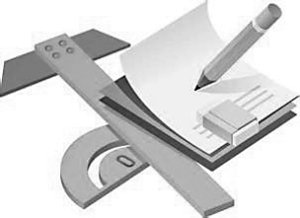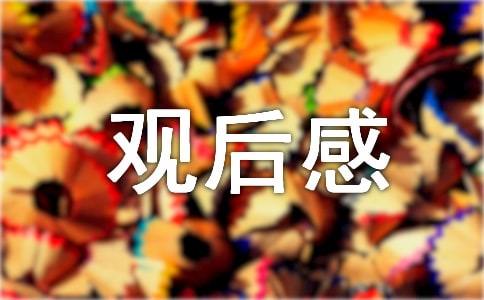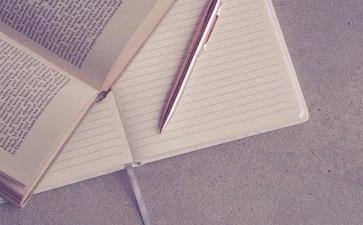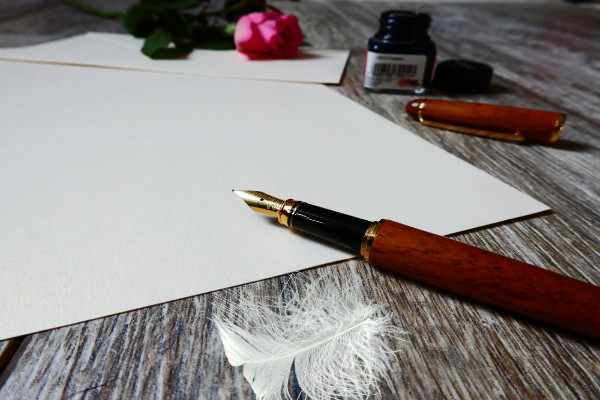下面是小编为大家整理的福州三坊七巷景点导游词22篇,供大家参考。

福州三坊七巷景点导游词(通用22篇)
福州三坊七巷景点导游词 篇1
福州是一座拥有2200多年历史的名城。唐开元十三年(725年)设福州都督府始称福州。五代梁开平二年(908年)闽王王审知扩建城池,将风景秀丽的乌山、于山、屏山圈入城内,从此福州成为“山在城中,城在山中”的独特城市。“三山”成了福州的别名。
福州位于福建省东部闽江下游,是全省政治、经济、文化中心。全市总面积11968平方公里,其中市区总面积1043平方公里;总人口48O多万,其中城区人口116万。“因州北有福山”,故名福州,又因900多年前就遍植榕树,“绿阴满城,暑不张盖”,故又有“榕城”的美称。现辖鼓楼、台江、仓山、马尾、晋安五个区和福清、闽侯、罗源、连江、长乐、平潭、闽清、永泰等二市六县。居民以汉族为主,还有畲、满、苗、回等20多个少数民族。福州依山傍海,气候宜人,绿树常青,属暖湿的亚热带季风气候。年平均气温为19.6℃,最冷1月平均气温为10.5℃,最热7月平均气温为28.6℃,年均降水量1342.5毫米。最佳旅游季节为每年4~11月。市区内有闻名全国的温泉。
各位团友,今天我讲解的内容是福州明清时期古建筑瑰宝――三坊七巷。
三坊七巷地处市中心,东临八一七北路,西靠通湖路,北接杨桥路,南达吉庇巷、光禄坊,占地约40公顷,现居民3678户,人口14000余人。三坊七巷是南后街两旁从北到南依次排列的十条坊巷的简称。三坊是:衣锦坊、文儒坊、光禄坊;七巷是杨桥巷、郎官巷、塔巷、黄巷、安民巷、宫巷、吉庇巷。由于吉庇巷、杨桥巷和光禄坊改建为马路,现在保存的实际只有二坊五巷。即使如此,在这个历史悠久的居民区内,仍然保留着丰富的文物古迹,保存一批名人故居和明清时代的建筑。在这居民区内,坊巷纵横,石板铺地;白墙青瓦,结构严谨;房屋精致,匠艺奇巧,集中体现了闽越古城的民居特色,是闽江文化的荟萃之所,被建筑界喻为一座规模庞大的明清古建筑博物馆。
“三坊七巷”是国家历史文化名城――福州的主要标志,被誉为明清古建筑博物馆。近代诗人陈衍诗云:“谁知五柳孤松客,却住三坊七巷间。”这大约就是“三坊七巷”的由来。
三坊七巷的民风民俗也是福州民风民俗的代表,许多节俗活动常以三坊七巷为中心,它包括民间信仰、岁时节庆活动、建筑物中的民俗等。
“月光光,照池塘;骑竹马,过洪塘;洪塘水深难得渡,等妹撑船来接郎。问郎长,问郎短,问郎几时返?”这是唐朝观察使常衮作的一首民谣。它曾给居住在三坊七巷的几代百姓带来多少童年的回忆。直到现在,特别是老一辈人听到这首琅琅上口的民谣仍激动不已。
三坊七巷,以它近300座的明清民居古建筑物闻名于世。古老的街巷,完整的坊里,配以古河道、古桥梁、古榕树,形成了古朴而富有特色的传统风貌,引起了国内外许多文物考古专家的广泛兴趣,成为游客前来福州的必到之处。可以说,它是“全国少见,江南仅有”。而老家在福州的海外游子,三坊七巷是他们魂牵梦绕、难以忘怀的故园乡土。
福州三坊七巷景点导游词 篇2
大家好!一路辛苦了!首先,我代表旅行社欢迎各位来到福建省会---福州市旅游观光。我是中旅的导游。我姓×,大家叫我小×或×导都行。我旁边这位是我们的司机陈师傅,这两天都由我和陈师傅为你们服务,我们会尽最大的努力。希望我的工作能得到各位的大力支持,希望我们的服务,能使您的福州之行留下美好的回忆。
福州是一座拥有2200多年历史的名城。唐开元十三年设福州都督府始称福州。五代梁开平二年闽王王审知扩建城池,将风景秀丽的乌山、于山、屏山圈入城内,从此福州成为“山在城中,城在山中”的独特城市。“三山”成了福州的别名。
福州位于福建省东部闽江下游,是全省政治、经济、文化中心。全市总面积11,968平方公里,其中市区总面积1043平方公里;总人口480多万,其中城区人口116万。“因州北有福山”,故名福州,又因九百多年前就遍植榕树,“绿荫满城,暑不张盖”,故又有“榕城”的美称。现辖鼓楼、台江、仓山、马尾、晋安五个区和福清、闽侯、罗源、连江、长乐、平潭、闽清、永泰等二市六县。居民以汉族为主,还有畲、满、苗、回等二十多个少数民族。福州依山傍海,气候宜人,绿树长青,属暖湿的亚热带季风气候。年平均气温为19.6℃,最冷一月平均气温为10.5℃,最热七月平均气温28.6℃,年均降水量1342.5毫米。最佳旅游季节为每年4-11月。市区内有闻名全国的温泉。
各位团友,今天我讲解的内容是福州明清时期古建筑瑰宝----三坊七巷。
三坊七巷地处市中心,东临八一七北路,西靠通湖路,北接杨桥路,南达吉庇巷、光禄坊,占地约40公顷,现居民3678户,人口14000余人。三坊七巷是南后街两旁从北到南依次排列的十条坊巷的简称。三坊是:衣锦坊、文儒坊、光禄坊;七巷是杨桥巷、郎官巷、塔巷、黄巷、安民巷、宫巷、吉庇巷。由于吉庇巷、杨桥巷和光禄坊改建为马路,现在保存的实际只有二坊五巷。即使如此,在这个历史悠久的居民区内,仍然保留着丰富的文物古迹,保存一批名人故居和明清时代的建筑。在这居民区内,坊巷纵横,石板铺地;白墙青瓦,结构严谨;房屋精致,匠艺奇巧,集中体现了闽越古城的民居特色,是闽江文化的荟萃之所,被建筑界喻为一座规模庞大的明清古建筑博物馆。
“三坊七巷”是国家历史文化名城----福州的主要标志,被誉为明清古建筑博物馆。近代诗人陈衍诗云:“谁知五柳孤松客,却住三坊七巷间。”这大约就是“三坊七巷”的由来。
三坊七巷的民风民俗也是福州民风民俗的代表,许多节俗活动中心常集中在三坊七巷,它包括民间信仰、岁时节庆活动、建筑物中的民俗等。
“月光光,照池塘;骑竹马,过洪塘;洪塘水深难得渡,等妹撑船来接郎。问郎长,问郎短,问郎几时返?”这是唐朝观察使常衮作的一首民谣。它曾给居住在三坊七巷的几代百姓带来多少童年的回忆。直到现在,特别是老一辈人听到这首琅琅上口的民谣仍激动不已。
三坊七巷,以她近三百座的明清民居古建筑物闻名于世。古老的街巷,完整的坊里,配以古河道、古桥梁、古榕树,形成了古朴而富有特色的传统风貌,引起了国内外许多文物考古专家的广泛兴趣,成为游客前来福州的必到之处。可以说,她是“全国少见,江南仅有”。而老家在福州的海外游子,三坊七巷是他们魂牵梦绕、难以忘怀的故园乡土。
“三坊七巷”的路,绝对是小路,也许几百年来就是这样小,小得只能并排走两顶轿子吧!然而“山不在高,有仙则灵!”路不在大,有人则名。就是从这样的小巷里,历代走出了多少风流人物,多少英雄豪杰?他们走出幽深的坊巷,走向八闽大地,走向五湖四海,成就了一番大事业。他们为“三坊七巷”增光,“三坊七巷”也为有他们而骄傲。
三坊七巷的古建筑风貌主要表现在:石板深巷,青瓦粉墙,各式精雕细刻的门罩,风火墙式的多进院落,从高处府视犹如海上层层波浪,那此起彼落的万倾波涛既无比壮观又震撼人心。
三坊七巷不仅以她的古建筑闻名于世,她还代表了福州人重教育,好读书的优良传统,科举之盛,在全国也属罕见。南宋著名学者,被称为与朱熹、张轼齐名的东南三贤之一的吕祖谦,在福州写下了一首脍炙人口的诗篇:“路逢十客九青矜,半是同袍旧弟兄。最忆市桥灯火静,巷南巷北读书声。”这首诗也是三坊七巷的生动写照,说明了福州读书人之多,以及深夜苦读的生动景象。
“三坊七巷”是福州历史的的见证;“三坊七巷”是闽江流域人民智慧的结晶;“三坊七巷”更是福州人文荟萃的缩影。它记录了唐末五代时闽王王审知立国的史实,记录了宋末端宗南明隆武皇帝在福州称帝的经历。它吹洒着辛亥革命的风雨,传播着北京“五四”运动在福州的影响。这些坊巷内曾经居住过上百名高官显贵、学者名流,唐著名学者黄璞,宋理学家陈襄、晚唐诗人陈烈、状元郑性之、明抗倭名将张经、清巡抚沈葆桢、近代启蒙思想家严复等等都曾在三坊七巷居住过,还有黄花岗著名烈士林觉民。说到林觉民我们不能不提到他的《与妻书》。林觉民牺
福州三坊七巷景点导游词 篇3
三坊七巷不仅以她的古建筑闻名于世,她还代表了福州人重教育,好读书的优良传统,科举之盛,在全国也属罕见。南宋学者,被称为与朱熹、张轼齐名的东南三贤之一的吕祖谦,在福州写下了一首脍炙人口的诗篇:“路逢十客九青矜,半是同袍旧弟兄。最忆市桥灯火静,巷南巷北读书声。”这首诗也是三坊七巷的生动写照,说明了福州读书人之多,以及深夜苦读的生动景象。
“三坊七巷”是福州历史的的见证;“三坊七巷”是闽江流域人民智慧的结晶;“三坊七巷”更是福州人文荟萃的缩影。它记录了唐末五代时闽王王审知立国的史实,记录了宋末端宗南明隆武皇帝在福州称帝的经历。它吹洒着辛亥革命的风雨,传播着北京“五四”运动在福州的影响。这些坊巷内曾经居住过上百名高官显贵、学者名流,唐学者黄璞,宋理学家陈襄、晚唐诗人陈烈、状元郑性之、明抗倭名将张经、清巡抚沈葆桢、近代启蒙思想家严复等等都曾在三坊七巷居住过,还有黄花岗烈士林觉民。说到林觉民我们不能不提到他的《与妻书》。林觉民牺牲后,全家为了避祸匿居在光禄坊早题巷一处许家院宅。一天晚上,有人悄悄地将林觉民写给父亲及妻子的遗书塞进门缝,林觉民的妻子一直将这封信珍藏到辛亥革命福州光复后。这一如诗如画的名篇写得情真意切,感人肺腑,催人泪下,不仅表达了夫妻间深深的歉疚和殷殷的情意,而且表达了“乐牺牲吾身与汝身之福利,为天下谋永福”的革命精神和伟大情怀,激励了千千万万的热血青年。具有极为珍贵的历史价值和艺术价值。
《与妻书》中也十分细腻地表达了烈士对故里“三坊七巷”的眷恋之情,有一段是这样描写的:“后街之屋,入门穿廊,过前后厅,又三四折,有小厅,厅旁一屋,为吾与汝双栖之所,初婚三四个月,适冬之望日前后,窗外疏梅筛月影,依稀掩映……”看到这,我们怎能不为烈士牺牲前对亲人和美丽家园----“三坊七巷”深深眷恋之情所震憾呢!谁没有亲人,谁没有自己的家园?可林觉民却英勇奋战,在负伤被擒受审时仍表示:“只要革除暴政,建立共和,能使国家富强则吾死瞑目矣”,这就是革命者何等博大情怀!
“最忆市桥灯火静,巷南巷北读书声”,让我们再一次感悟到故乡“三坊七巷”古老厚重的文化对我们的培养和熏陶。
福州三坊七巷景点导游词 篇4
Dear friends, Hello! I'm Xiao Chen, the tour guide of Chunqiu travelagency. Today, I'm going to show you three lanes and seven alleys, the ancientarchitectural treasures of Ming and Qing Dynasties in Fuzhou.
Three lanes and seven lanes are located in the center of the city. They areadjacent to bay17 North Road in the East, Tonghu road in the west, Yangqiao roadin the north, Jibi lane and Guanglu Lane in the south, three lanes in the Westand Seven Lanes in the East. From north to south, they are Yijin lane, Wenrulane and Guanglu lane; Yangqiao lane, Langguan lane, Ta lane, Huang Lane, Anminlane, Gong lane and Jibi lane, covering a total area of 38 square meters. 35hectares. Due to the reconstruction of Jibi lane, Yangqiao lane and Guanglu laneinto roads, the number of lanes preserved now is actually only two lanes andfive lanes. Even so, in this residential area with a long history, there arestill rich cultural relics and historic sites, including a number of formerresidences of celebrities and buildings of Ming and Qing Dynasties. In thisresidential area, there are many lanes and lanes, paved with stone slabs, whitewalls and green tiles, rigorous structure, exquisite houses and ingeniouscraftsmanship, which embody the characteristics of Minyue ancient city, and arethe gathering place of Minjiang culture.
Today we mainly visit Yijin lane and Langguan Lane among the existing twolanes and five lanes. Please follow me. Yijinfang was formerly known astongchaoxiang, because this place is a water network area. The tides of the WestLake and the South Lake can reach the ditches of this lane. Some people in theworkshop went out to be a senior official, and then returned to their hometownin splendid clothes, so they changed the name of the workshop. No. 16 inFangzhong is the residence of Zheng Pengcheng, a Jinshi of Jiaqing in QingDynasty. Among them, the waterside pavilion stage is the most characteristic. Itis a single-layer wooden platform with four columns and single bay. Under it isa clear water pond, with a patio in the middle and a loft in the front. It is ofacoustic principle and aesthetic value to watch the drama performance here withclear water, clear wind and clear sound. Next, Xiao Chen will take you toLangguan lane. Langguanxiang was named because Liu Tao lived here in SongDynasty and his descendants have been Langguan for many generations. The formerresidence of Chen lie, a poet of the Song Dynasty, and Yan Fu, a celebrity ofthe Qing Dynasty, is also located in the alley. There is a memorial archway atthe west end of Langguan lane. There is a couplet on the pillar of the archway:"the translation is brilliant, today it is still passed on to Yan Fu's house;the gate is prosperous, and later generations trace back to Liu Tao'shouse."
In addition to the lanes I have just explained, there is also Tower Lane,which is south of Langguan lane and leads to the South back street in the West.It is named after Huang Lane because it has lived in the family of Huang.Gongxiang, which is named after Ziji palace, is a very good scenic spot. XiaoChen will not introduce it one by one. Now Xiao Chen will leave time for you.You can have free activities nearby and have a good time. We will meet at theeast gate of the lane at 10:30, thank you!
福州三坊七巷景点导游词 篇5
Fuzhou, an ancient city center with a history of more than 2200 years, islocated in this famous historical and cultural block of three lanes and sevenalleys. Covering an area of about 40 hectares, it is composed of three lanes,Seven Lanes and one central street, namely Yijin lane, Wenru lane and Guanglulane; Yangqiao lane, Langguan lane, Ta lane, Huang Lane, Anmin lane, Gong lane,Jibi lane and nanhou street, so it has been called "three lanes and Seven Lanes"since ancient times.
Three lanes and seven alleys originated in Jin Dynasty, perfected in Tangand Five Dynasties, and flourished in Ming and Qing Dynasties. Up to now, theancient pattern of lanes is basically intact. It is the only "living fossil ofLifang system" in Chinese cities. There are more than 200 ancient buildingspreserved in lanes. Among them, there are nine national key cultural relicsprotection units, and there are a large number of provincial and municipalcultural protection units and historical protection buildings The Museum ofarchitecture.
The three lanes and seven alleys are famous for their unique geographicalfeatures. They have always been "the settlement of famous people in the capitalof Fujian". Many people, such as Lin Zexu, Shen Baozhen, Yan Fu, Chen Baochen,Lin Juemin, Lin Xu, Bing Xin, Lin Shu, who had an important influence on thesociety at that time and even the process of modern China, all came from theseplaces, making this hot land full of special humanistic values and unshakablespirituality and talents, and becoming the center of Fuzhou proud.
福州三坊七巷景点导游词 篇6
Hello, tourists! Welcome to Sanfangqixiang scenic spot. I'm thecommentator. First of all, let's briefly introduce the general situation ofSanfangqixiang scenic spot.
Sanfangqixiang scenic spot is located in the center of Fuzhou, a millenniumold city, covering an area of about 40 hectares. Three lanes and seven alleyswere first formed in 308 of the Western Jin Dynasty. The architectural patternwas formed in the Tang Dynasty (901) and flourished in the Ming and QingDynasties. It has a history of 1700 years. Taking nanhou street as the centralaxis, three lanes (Yijin lane, Wenru lane and Guanglu Lane) stretch out to thewest, and seven lanes (Yangqiao lane, Langguan lane, Ta lane, Huang Lane, Anminlane, Gong lane and Jibi Lane) stretch out to the East. They are arrangedorderly and vertically, forming a "fishbone" traditional street pattern, whichhas been known as "three lanes and Seven Lanes" since ancient times. After morethan a thousand years, it still retains the pattern of lanes left over from theTang and Song Dynasties, which is extremely rare in the whole country, and isknown as the "living fossil of Lifang system"; there are more than 200 intactMing and Qing ancient buildings in 159 places, including 9 at the nationallevel, 19 at the provincial and municipal level, 131 at the historicalprotection of ancient buildings, and a large number of cultural protectionunits. The concentration degree is the only in China, which is recognized byChinese architects It is also known as the "Museum of architecture of Ming andQing Dynasties". Moreover, the three lanes and seven alleys are also thehabitation of celebrities of past dynasties. In less than 40 hectares of land,more than 400 celebrities of past dynasties have emerged. In particular, a largenumber of people who had an important influence on the process of modern Chinesehistory, such as Lin Zexu, Yan Fu, Lin Juemin, Bing Xin, Lin Huiyin, ShenBaozhen, Chen Baochen, have emerged Today, let's enjoy the historical charm ofSanfangqixiang and the essence of Mindu culture.
As you can see, this is the former residence of two famous people in moderntimes. One is Lin Juemin, one of the 72 martyrs of Huanghuagang; the other isXie Bingxin, a famous female writer. Lin Juemin was an outstandingrepresentative of the 1911 Guangzhou Uprising. After Lin Juemin's death, ChenYuankai, the father-in-law of the provisional magistrate, sent people to Fuzhouovernight to inform him of the incident. His family moved to zaoti lane ofGuanglu square to avoid disaster. Later, Xie Bingxin's grandfather, Xie luan'en,bought the old house.
When it comes to Lin Juemin, we have to mention his book with his wife.This picturesque and poetic masterpiece is sincere, touching and tearful. It notonly expresses the deep regret and cordial feelings between husband and wife,but also expresses the revolutionary spirit and great feelings of "happy tosacrifice my body and your body's welfare and seek eternal happiness for theworld". It has inspired thousands of warm-blooded young people. It has extremelyprecious historical value and artistic value.
Now we come to the main entrance archway of Sanfang Qixiang. Three lanesand seven alleys in Fuzhou are not only three "lanes" and seven "Alleys", butalso a famous South back street. In the South back street, we can see the threetreasures of Fuzhou, the bodiless lacquerware of Fuzhou, the ox horn comb andthe oil paper umbrella, the famous Shoushan stone and cork paintings of Fuzhou,and all kinds of Fuzhou snacks.
Members of the group! After passing Yangqiao Road, we first came toLangguan lane, one of the Seven Lanes on the left. Why is it called Langguanlane? In the Northern Song Dynasty, there was a man named Liu Tao. He was aLangguan. All his descendants were Langguan, so this lane was called Langguanlane. Next, please visit Yan Fu's former residence in his later years. Yan Fu isa famous enlightenment thinker, translator and educator in modern China. He isan outstanding representative of the advanced people who "seek truth from thewest" in modern China. Yan Fu also served as president of Peking University andShanghai Fudan University. Yan Fu's translation of tianyanlun.
Now what you can see is Huangxiang. In history, there were eight surnameswho came to Fujian. After the larger Huang family came to Fujian, they settledhere and began to have the place name of Huangxiang. This lane is famous forxiaohuanglou.
We came to the first of the three squares, Yijin square. The earliest nameof yijinfang is tongchaoxiang, which is the closest to Fuzhou West Lake. It issaid that the water of the West Lake was connected with the ditches in thealley. The waterside pavilion stage of yijinfang was announced as a national keycultural relic protection unit in 20__.
"I remember the quiet lights of the city bridge and the sound of readingbooks in the South and north of the lane", let us once again feel thecultivation and edification of the ancient and heavy culture of "three lanes andSeven Lanes" in our hometown.
That's all for the explanation of "three lanes and Seven Alleys". Ourgathering time is x hours X minutes. You can move around freely and take photos.We can get on the train here on time. Thank you.
福州三坊七巷景点导游词 篇7
大家好,今天我们来到了有国家历史文化名城福州地标意义的“明清建筑博物馆”、“城市里坊制度的活化石”之称的中华第一街――“三坊七巷”参观游览。在20__年6月揭晓的首届“中国十大历史文化名街区评选”中,三坊七巷历史文化街区与北京国子监街、平遥南大街、哈尔滨中央大街等共同参选,以最高票获得文化部、国家文物局授予的“中国十大历史文化名街”荣誉称号。
公元前202年,福州城初建时,称“冶城”,统治者是勾践的后裔无诸。过了两百多年,西晋时期的福州已经稍有规模了。晋安郡首任太守严高嫌城太小,便在今屏山南麓建成一座郡城,称为“子城”。三坊七巷源于唐末闽王王审知扩建新城。王审知当政时,嫌原有子城太小,在子城外以钱纹砖砌筑起“罗城”,据说这是当时全国唯一的砖城。罗城南面以安泰河为界,城北是政治中心,多为贵族居住;城之南为平民居住区及商业区,也就是在此时,三坊七巷成为罗城西南的重要区域,坊巷格局初步形成。
今天的“三坊七巷”地处福州市中心,东临八一七北路,西靠通湖路,北接杨桥路,南达吉庇巷、光禄坊,占地约40公顷。“三坊”是:衣锦坊、文儒坊、光禄坊;“七巷”是:杨桥巷、郎官巷、安民巷、黄巷、塔巷、宫巷、吉庇巷,以南后街为中心轴线从北到南排列整齐,纵向有序,形成“棋盘状”的传统街巷格局。在城市变迁过程中,吉庇巷、杨桥巷和光禄坊被改建为马路,因此:我们今天讲三坊七巷实际只有二坊五巷。
“三坊七巷”历经许多年,格局依旧,基本保留着唐宋遗留下来的坊巷格局,保存较为完好的明清民国建筑计200多座,其中水榭戏台、严复故居、沈葆桢故居等全国重点文物保护单位有9处,是中国目前在市中心保留的规模最大、最完整的明清古建筑街区。“三坊七巷”体现了闽越古城的民居特色,体现福州古名居特有的时代特征和地域特色。建筑结构布局、建筑用材上适应福州潮湿温热的气候特点;院落庭院布局上体现传统家族伦理观念;园林精巧雅致,体现亲近山水的风雅情趣,被建筑界喻为一座规模庞大的“明清古建筑博物馆”。
除明清时代的建筑外,更令人惊叹的是三坊七巷的文化底蕴。近代诗人陈衍作诗提到:“谁知五柳孤松客,却住三坊七巷间。”三坊七巷自晋、唐代形成起,便是贵族和士大夫的聚居地。特别是到了清代中后期,福州士子固有的忧国忧民意识在世道变迁之中表现得更加强烈。这里涌现出一批对当时社会乃至中国近现代史进程产生重要影响的人物。林则徐、沈葆桢、林旭、严复、林觉民、林纾、林徽因、冰心、庐隐、郁达夫、郭化若、吴石……翻动历史,你会惊奇地发现,一大串在中国近现代舞台上风起云涌的人物,他们的生活背景都或多少映现在三坊七巷,的达150多人之众。
可以说,三坊七巷成为福州人文荟萃的缩影,凸显着福州人追求正统教化的人文性格与开拓进取的海洋文化精神的相互融合。作为福州城市精神集结地、福州名贤文化纪念地、福州传统商贾文化传承地、福州民俗文化展示地,三坊七巷承载了福州城市发展丰富的历史文化积淀,充分体现三坊七巷历史文化街区物质与非物质文化的特色与价值,是名符其实的中国名片。
每个城市都有独特的历史文化基因,城市在发展过程中要格外珍惜自己的文化遗产。福州也曾走过弯路。上世纪末,全国旧城改造热中,三坊七巷也曾面临相同的被“改造”危险。福建省、福州市及时调整思路,终止了用于房地产开发的原有改造项目。近年来,福建省委、省政府和福州市委、市政府高度重视三坊七巷历史文化街区的保护修复工作,将保护修复福州三坊七巷工作提上重要议事日程。三坊七巷由开发、改造转为整体保护、修复,政府投入逐步加大,保护修复工程支出主要投向民生,使三坊七巷的改造不仅成为物质文化和非物质文化的保护工程,更是改善市民的居住条件、生活条件的安居工程、民心工程。
“三坊七巷要成为活态的文化遗产”国家文物局局长单霁翔给予三坊七巷修复改造工程很高的评价。福州市的探索之可贵,在于同时保护生活形态和非物质文化遗产。修复后的三坊七巷不是排斥了原有居民原生态的旅游区,而是将三坊七巷打造成保持传统文化特色的居住社区,成为具有独特文化景观的城市活力地带。中共福建省委、宣传部长唐国忠说的好:三坊七巷是福州人文荟萃的缩影,闽台深厚渊源活化石,她的成功保护不仅仅是福州的财富,更是海峡两岸、海西经济区的共同荣耀,需要世世代代传承下去。
福州三坊七巷景点导游词 篇8
Fuzhou is a famous city with a history of more than 2200 years. In the 13thyear of Kaiyuan of Tang Dynasty (725), Fuzhou was established as the capital ofFuzhou. In 908, the second year of Liang Kaiping in the Five Dynasties, WangShenzhi, the king of Fujian, expanded the city and enclosed the beautifulWushan, Yushan and Pingshan into the city. Since then, Fuzhou has become aunique city with "mountains in the city and cities in the mountains". "Threemountains" became the alias of Fuzhou.
Located in the lower reaches of Minjiang River in the east of FujianProvince, Fuzhou is the political, economic and cultural center of FujianProvince. The total area of the city is 11968 square kilometers, including 1043square kilometers of urban area; the total population is more than 4.8 million,including 1.16 million urban population. "Because there are Fushan mountains inthe north of Fuzhou", it is named Fuzhou. Because banyan trees were planted morethan 900 years ago, "the city is full of green and shade, but not covered insummer", it is also known as "banyan city". At present, it has jurisdiction overfive districts of Gulou, Taijiang, Cangshan, Mawei and Jin'an, and two citiesand six counties of Fuqing, Minhou, Luoyuan, Lianjiang, Changle, Pingtan,Minqing and Yongtai. The residents are mainly Han nationality, and there aremore than 20 ethnic minorities, such as she, man, Miao and Hui. Fuzhou is a warmand humid subtropical monsoon climate with pleasant climate and evergreen trees.The annual average temperature is 19.6 ℃, the average temperature in the coldestJanuary is 10.5 ℃, the average temperature in the hottest July is 28.6 ℃, andthe average annual precipitation is 1342.5mm. The best tourism season is fromApril to November every year. There is a famous hot spring in the city.
Members, today I'm going to talk about three lanes and seven alleys, theancient architectural treasures of Ming and Qing Dynasties in Fuzhou.
Sanfangqixiang is located in the center of the city. It is adjacent tobay17 North Road in the East, Tonghu road in the west, Yangqiao road in thenorth, Jibi lane and Guanglu square in the south. It covers an area of about 40hectares and has 3678 households with a population of more than 14000. Threelanes and seven alleys are the abbreviation of ten alleys arranged from north toSouth on both sides of nanhou street. Three lanes are Yijin lane, Wenru lane andGuanglu lane; seven lanes are Yangqiao lane, Langguan lane, Ta lane, Huang Lane,Anmin lane, Gong lane and Jibi lane. Due to the reconstruction of Jibi lane,Yangqiao lane and Guanglu lane into roads, only two lanes and five lanes arepreserved. Even so, in this residential area with a long history, there arestill rich cultural relics and historic sites, including a number of formerresidences of celebrities and buildings of Ming and Qing Dynasties. In thisresidential area, there are many lanes, stone slabs, white walls and greentiles, strict structure, exquisite houses and ingenious craftsmanship, whichembody the characteristics of Minyue ancient city. It is a gathering place ofMinjiang culture, and is regarded as a large-scale museum of Ming and Qingancient architecture by the architectural circles.
"Three lanes and Seven Alleys" is the main symbol of Fuzhou, a famoushistorical and cultural city of China. It is known as the Museum of ancientarchitecture of Ming and Qing Dynasties. Chen Yan, a modern poet, said: "whoknows that the five willows are solitary pines, but they live in three lanes andseven alleys." This is about the origin of "three lanes and Seven Alleys".
The folk customs of the three lanes and seven alleys are also therepresentative of the folk customs in Fuzhou. Many festival activities are oftencentered on the three lanes and seven alleys, including folk beliefs, festivalactivities at the age of, folk customs in buildings, etc.
"Moonlight shines on the pond; riding a bamboo horse across the pond; it'shard to cross the depth of the pond. Wait for my sister to take a boat to meetLang. Ask long Lang, short Lang and when will Lang return? " This is a folk songwritten by Chang Gung, an observer of the Tang Dynasty. It has brought manychildhood memories to generations of people living in three lanes and sevenalleys. Until now, especially the older generation is still excited to hear thiscatchy folk song.
Three lanes and seven lanes are famous for its nearly 300 ancientresidential buildings in Ming and Qing Dynasties. The ancient streets, completelanes, ancient rivers, ancient bridges and ancient banyan trees have formed asimple and distinctive traditional style, which has aroused the wide interest ofmany experts in cultural relics and Archaeology at home and abroad, and hasbecome a must for tourists to come to Fuzhou. It can be said that it is "rare inthe whole country, only in Jiangnan". The three lanes and seven alleys ofoverseas Chinese in Fuzhou are their haunted and unforgettable hometown.
福州三坊七巷景点导游词 篇9
各位团友,今天我讲解的内容是福州明清时期古建筑瑰宝——三坊七巷。
三坊七巷地处市中心,东临八一七北路,西靠通湖路,北接杨桥路,南达吉庇巷、光禄坊,占地约40公顷,现居民3678户,人口14000余人。三坊七巷是南后街两旁从北到南依次排列的十条坊巷的简称。三坊是:衣锦坊、文儒坊、光禄坊;七巷是杨桥巷、郎官巷、塔巷、黄巷、安民巷、宫巷、吉庇巷。由于吉庇巷、杨桥巷和光禄坊改建为马路,现在保存的实际只有二坊五巷。即使如此,在这个历史悠久的居民区内,仍然保留着丰富的文物古迹,保存一批名人故居和明清时代的建筑。在这居民区内,坊巷纵横,石板铺地;白墙青瓦,结构严谨;房屋精致,匠艺奇巧,集中体现了闽越古城的民居特色,是闽江文化的荟萃之所,被建筑界喻为一座规模庞大的明清古建筑博物馆。
“三坊七巷”是国家历史文化名城——福州的主要标志,被誉为明清古建筑博物馆。近代诗人陈衍诗云:“谁知五柳孤松客,却住三坊七巷间。”这大约就是“三坊七巷”的由来。
三坊七巷的民风民俗也是福州民风民俗的代表,许多节俗活动常以三坊七巷为中心,它包括民间信仰、岁时节庆活动、建筑物中的民俗等。
“月光光,照池塘;骑竹马,过洪塘;洪塘水深难得渡,等妹撑船来接郎。问郎长,问郎短,问郎几时返?”这是唐朝观察使常衮作的一首民谣。它曾给居住在三坊七巷的几代百姓带来多少童年的回忆。直到现在,特别是老一辈人听到这首琅琅上口的民谣仍激动不已。
三坊七巷,以它近300座的明清民居古建筑物闻名于世。古老的街巷,完整的坊里,配以古河道、古桥梁、古榕树,形成了古朴而富有特色的传统风貌,引起了国内外许多文物考古专家的广泛兴趣,成为游客前来福州的必到之处。可以说,它是“全国少见,江南仅有”。而老家在福州的海外游子,三坊七巷是他们魂牵梦绕、难以忘怀的故园乡土。
福州三坊七巷景点导游词 篇10
hello everyone! Hard work all the way! First of all, on behalf of thetravel agency, I would like to welcome you to Fuzhou, the capital of FujianProvince. I'm a tour guide of CTS. My family name is __. You can call me Xiao Xor director X. Next to me is our driver, Mr. Chen. Mr. Chen and I will serve youthese two days. We will try our best. I hope my work can get your strong supportand our service can make your trip to Fuzhou leave a good memory.
Fuzhou is a famous city with a history of more than 2200 years. In the 13thyear of Kaiyuan of Tang Dynasty, Fuzhou was established as the capital ofFuzhou. In the second year of Liang Kaiping in the Five Dynasties, King Shenzhiof Fujian expanded the city and enclosed the beautiful Wushan, Yushan andPingshan into the city. From then on, Fuzhou became a unique city with"mountains in the city and cities in the mountains". "Three mountains" becamethe alias of Fuzhou.
Located in the lower reaches of Minjiang River in the east of FujianProvince, Fuzhou is the political, economic and cultural center of FujianProvince. The total area of the city is 11968 square kilometers, including 1043square kilometers in the urban area, and the total population is more than 4.8million, including 1.16 million in the urban area. Fuzhou is also known as "thecity of banyan" because it was planted with banyan trees more than 900 yearsago. At present, it has jurisdiction over five districts of Gulou, Taijiang,Cangshan, Mawei and Jin'an, and two cities and six counties of Fuqing, Minhou,Luoyuan, Lianjiang, Changle, Pingtan, Minqing and Yongtai. The residents aremainly Han nationality, and there are more than 20 ethnic minorities, such asshe, man, Miao and Hui. Fuzhou is a warm and humid subtropical monsoon climatewith pleasant climate and evergreen trees. The annual average temperature is19.6 ℃, the average temperature in the coldest month is 10.5 ℃, the averagetemperature in the hottest July is 28.6 ℃, and the average annual precipitationis 1342.5mm. The best travel season is from April to November every year. Thereis a famous hot spring in the city.
Members of the group, what I'm going to talk about today is the treasure ofancient architecture in Ming and Qing Dynasties in Fuzhou -- three lanes andseven alleys.
Sanfangqixiang is located in the center of the city. It is adjacent tobay17 North Road in the East, Tonghu road in the west, Yangqiao road in thenorth, Jibi lane and Guanglu square in the south. It covers an area of about 40hectares and has 3678 households with a population of more than 14000. Threelanes and seven alleys are the abbreviation of ten alleys arranged from north toSouth on both sides of nanhou street. Three lanes are Yijin lane, Wenru lane andGuanglu lane; seven lanes are Yangqiao lane, Langguan lane, Ta lane, Huang Lane,Anmin lane, Gong lane and Jibi lane. Due to the reconstruction of Jibi lane,Yangqiao lane and Guanglu lane into roads, only two lanes and five lanes arepreserved. Even so, in this residential area with a long history, there arestill rich cultural relics and historic sites, including a number of formerresidences of celebrities and buildings of Ming and Qing Dynasties. In thisresidential area, there are many lanes, stone slabs, white walls and greentiles, strict structure, exquisite houses and ingenious craftsmanship, whichembody the characteristics of Minyue ancient city. It is a gathering place ofMinjiang culture, and is regarded as a large-scale museum of Ming and Qingancient architecture by the architectural circles.
"Three lanes and Seven Alleys" is the main symbol of Fuzhou, a famoushistorical and cultural city of China. It is known as the Museum of ancientarchitecture of Ming and Qing Dynasties. Chen Yan, a modern poet, said: "whoknows that the five willows are solitary pines, but they live in three lanes andseven alleys." This is about the origin of "three lanes and Seven Alleys".
The folk customs of three lanes and seven alleys are also therepresentative of Fuzhou folk customs. Many festival and custom centers areoften concentrated in three lanes and seven alleys, which include folk beliefs,festival activities at the age of, folk customs in buildings, etc.
"Moonlight shines on the pond; riding a bamboo horse across the pond; it'shard to cross the depth of the pond. Wait for my sister to take a boat to meetLang. Ask long Lang, short Lang and when will Lang return? " This is a folk songwritten by Chang Gung, an observer of the Tang Dynasty. It has brought manychildhood memories to generations of people living in three lanes and sevenalleys. Until now, especially the older generation is still excited to hear thiscatchy folk song.
Three lanes and seven alleys are famous for its nearly 300 ancientresidential buildings of Ming and Qing Dynasties. The ancient streets, completelanes, ancient rivers, ancient bridges and ancient banyan trees have formed asimple and distinctive traditional style, which has aroused the wide interest ofmany experts in cultural relics and Archaeology at home and abroad, and hasbecome a must for tourists to come to Fuzhou. It can be said that she is "rarein China, only in Jiangnan". The three lanes and seven alleys of overseasChinese in Fuzhou are their haunted and unforgettable hometown.
The road of "three lanes and Seven Alleys" is definitely a small road.Maybe it has been so small for hundreds of years that it can only walk two sedanchairs side by side. However, "the mountain is not high, the immortal is thespirit!" the road is not big, and some people are famous. It is from such alleysthat how many celebrities and heroes have emerged in the past dynasties? Theywent out of the deep alleys, to the land of Fujian, to all corners of the world,and achieved a great cause. They are proud of them.
The ancient architectural features of the three lanes and seven alleys aremainly shown in the following aspects: stone slab deep alleys, green tiles andpowder walls, various kinds of exquisitely carved door covers, wind and firewall style multi entrance courtyards. From the height of the mansion, it lookslike layers of waves on the sea, and the waves from one place to another aremagnificent and shocking.
Three lanes and seven alleys are not only famous for their ancientbuildings, but also represent the fine tradition of Fuzhou people's emphasis oneducation and good reading. The prosperity of the imperial examination is alsorare in China. Lu Zuqian, a famous scholar in the Southern Song Dynasty, who isknown as one of the three sages in Southeast China as well as Zhu Xi and ZhangShi, wrote a well-known poem in Fuzhou: "when the road meets ten guests, nineare green, half are old brothers in the same robe. I remember the quiet lightsof the city bridge and the sound of reading in the South and north of the lane." This poem is also a vivid portrayal of three lanes and seven alleys, whichshows the number of scholars in Fuzhou and the vivid scene of studying hard atnight.
"Three lanes and Seven Alleys" is the witness of Fuzhou's history; "threelanes and Seven Alleys" is the crystallization of people's wisdom in MinjiangRiver Basin; "three lanes and Seven Alleys" is the epitome of Fuzhou's gatheringof people and culture. It records the historical facts of Min king in the lateTang Dynasty and Five Dynasties, and the experience of emperor zongnan of SongDynasty and Emperor Longwu of Ming Dynasty in Fuzhou. It blew the wind and rainof the 1911 Revolution and spread the influence of the May 4th movement ofBeijing in Fuzhou. There were hundreds of high-ranking officials, scholars andcelebrities living in these lanes. Huang Pu, a famous scholar in Tang Dynasty,Chen Xiang, a neo Confucianist in Song Dynasty, Chen lie, a poet in late TangDynasty, Zheng Xingzhi, a champion, Zhang Jing, a famous Anti Japanese generalin Ming Dynasty, Shen Baozhen, a governor of Qing Dynasty, Yan Fu, a modernenlightenment thinker, etc. all lived in Sanfang Qixiang, and Lin Juemin, afamous martyr in Huanghuagang. When it comes to Lin Juemin, we have to mentionhis book with his wife. Lin Juemin
福州三坊七巷景点导游词 篇11
各位游客大家好!欢迎来到三坊七巷景区参观游览,我是讲解员__首先为大家简要介绍一下三坊七巷景区的总体概况。
三坊七巷景区位于千年古城福州市中心,占地面积约40公顷。三坊七巷最早形成是在西晋308年,建筑格局形成于唐天复元年代(901年),繁荣于明清时期,至今已有1700年的历史。以南后街为中轴,向西伸出了三个坊(衣锦坊、文儒坊、光禄坊),向东伸出七条巷(杨桥巷、郎官巷、塔巷、黄巷、安民巷、宫巷、吉庇巷),排列整齐,纵向有序,形成“鱼骨状”传统街巷格局,自古以来就被人们称为“三坊七巷”。历经千余年来,仍完整保留着唐宋遗留下来的坊巷格局,这在全国范围内都极为罕见,被誉为“里坊制度活化石”;现存较为完好的明清古建筑200多座159处,包括国家级9处,省市级19处,历史保护古建筑131处,文保单位众多,集中程度堪称全国唯一,被我国建筑学界誉为“明清建筑博物馆”;不仅如此,三坊七巷还是历代名人聚居地,在这不足40公顷的土地上曾先后走出历代名人达400多位,尤其是曾涌现出了林则徐、严复、林觉民、冰心、林徽因、沈葆桢、陈宝琛等一大批对中国近代史进程有着重要影响的人物,也因此而获得了“一片三坊七巷,半部中国近现代史”的美誉;今天就让我们一同来领略三坊七巷历史神韵和闽都文化的精髓。
大家所看到的这是一座居住着近现代两位名人的故居,一位是黄花岗七十二烈士之一――林觉民;另一位就是著名的女作家谢冰心。林觉民是辛亥广州起义杰出代表人物,林觉民遇难后,临时知县的岳父陈元凯连夜托人到福州告知此事,全家为避祸搬到光禄坊的早题巷。后来,谢冰心的祖父谢銮恩买下了这栋旧居。
说到林觉民我们不能不提到他的《与妻书》。这一如诗如画的名篇写得情真意切,感人肺腑,催人泪下,不仅表达了夫妻间深深的歉疚和殷殷的情意,而且表达了“乐牺牲吾身与汝身之福利,为天下谋永福”的革命精神和伟大情怀,激励了千千万万的热血青年。具有极为珍贵的历史价值和艺术价值。
我们现在来到的是三坊七巷的主入口牌坊。福州三坊七巷不仅仅是三条“坊”和七条“巷”,还有一条闻名遐迩的南后街。在南后街中我们可以看到福州的三宝,福州的脱胎漆器,牛角梳和油纸伞,还有福州著名的寿山石和软木画,各色各样的福州小吃。
各位团友!走过了杨桥路,我们首先来到左边的这条巷就是七巷之一的郎官巷。为什么这叫郎官巷呢?北宋有个叫刘涛的人,他是郎官,他的子孙皆为郎官,所以叫此巷为郎官巷。接下来请大家参观严复晚年的居所―――严复故居。严复是中国近代著名的启蒙思想家、翻译家和教育家,是中国近代“向西方寻找真理”的先进人物的杰出代表。严复还担任过北京大学、上海复旦公学校长等职。严复译述《天演论》。
现在大家看到的是黄巷,历史上出现了衣冠南渡,八姓入闽,其中较大的一支黄氏家族入闽后,聚居于此,开始有了黄巷的地名。该巷以小黄楼著称。
我们来到三坊中的第一坊――衣锦坊。衣锦坊最早的名字叫“通潮巷”,是三坊七巷中最靠近福州西湖的。据说,当年西湖的湖水与巷子里的沟渠相通。衣锦坊的水榭戏台20__年被公布为全国重点文物保护单位。
“最忆市桥灯火静,巷南巷北读书声”,让我们再一次感悟到故乡“三坊七巷”古老厚重的文化对我们的培养和熏陶。
各位团友,“三坊七巷”的讲解就到这里。我们集合的时间是×时×分,各位朋友可以在附近自由活动、照相,我们准时在这里集中上车,谢谢大家。
福州三坊七巷景点导游词 篇12
Traditionally, we all talk about three lanes first and then seven lanes. Infact, from the perspective of building location, there should be seven lanesfirst and then three lanes. The ancestors of the Tang Dynasty first built agroup of neatly arranged "new villages" along the axis of the city south street.After that, a group of lanes will be built to form a "non" shaped block with theSouth back street as the central axis. After thousands of years of wind and rainchanges, most of the lanes were named in Song Dynasty, and today's architecturalpattern was formed in Ming and Qing Dynasties, which became the landmark ofFuzhou's historical and cultural city.
From the treatment of architectural space, the main hall of three lanes andseven alleys on the central axis is obviously higher, larger and wider than thatin the north, forming a lively and changeable spatial pattern with othercorridors and pavilions. The hall is generally open and integrated with thepatio. In particular, in order to make the hall appear tall, spacious and open,efforts are generally made to deal with the porch and porch. The purlinsupporting the eaves, or a purlin supporting the eaves, is specially made ofthick and long high-quality hardwood, and the method of reducing columns is usedto make the front of the hall free of any obstacles, which is rarely seen innorthern architecture and other southern architecture. For example, the sedanHall of Lin Congyi's former residence in Gongxiang and the stage of theancestral temple are treated in this way. This is one of the important featuresof Fuzhou ancient architecture.
The three lanes and seven alleys are not only unique in layout andstructure, but also unique in wall, carving and facade.
福州三坊七巷景点导游词 篇13
各位朋友:大家好,今天我们来到了有国家历史文化名城福州地标意义的“明清建筑博物馆”、“城市里坊制度的活化石”之称的中华第一街——“三坊七巷”参观游览。在20__年6月揭晓的首届“中国十大历史文化名街区评选”中,三坊七巷历史文化街区与北京国子监街、平遥南大街、哈尔滨中央大街等共同参选,以最高票获得文化部、国家文物局授予的“中国十大历史文化名街”荣誉称号。
公元前220__年,福州城初建时,称“冶城”,统治者是勾践的后裔无诸。过了两百多年,西晋时期的福州已经稍有规模了。晋安郡首任太守严高嫌城太小,便在今屏山南麓建成一座郡城,称为“子城”。三坊七巷源于唐末闽王王审知扩建新城。王审知当政时,嫌原有子城太小,在子城外以钱纹砖砌筑起“罗城”,据说这是当时全国唯一的砖城。罗城南面以安泰河为界,城北是政治中心,多为贵族居住;城之南为平民居住区及商业区,也就是在此时,三坊七巷成为罗城西南的重要区域,坊巷格局初步形成。
今天的“三坊七巷”地处福州市中心,东临八一七北路,西靠通湖路,北接杨桥路,南达吉庇巷、光禄坊,占地约40公顷。“三坊”是:衣锦坊、文儒坊、光禄坊;“七巷”是:杨桥巷、郎官巷、安民巷、黄巷、塔巷、宫巷、吉庇巷,以南后街为中心轴线从北到南排列整齐,纵向有序,形成“棋盘状”的传统街巷格局。在城市变迁过程中,吉庇巷、杨桥巷和光禄坊被改建为马路,因此:我们今天讲三坊七巷实际只有二坊五巷。
“三坊七巷”历经许多年,格局依旧,基本保留着唐宋遗留下来的坊巷格局,保存较为完好的明清民国建筑计200多座,其中水榭戏台、严复故居、沈葆桢故居等全国重点文物保护单位有9处,是中国目前在市中心保留的规模最大、最完整的明清古建筑街区。“三坊七巷”体现了闽越古城的民居特色,体现福州古名居特有的时代特征和地域特色。建筑结构布局、建筑用材上适应福州潮湿温热的气候特点;院落庭院布局上体现传统家族伦理观念;园林精巧雅致,体现亲近山水的风雅情趣,被建筑界喻为一座规模庞大的“明清古建筑博物馆”。
除明清时代的建筑外,更令人惊叹的是三坊七巷的文化底蕴。近代诗人陈衍作诗提到:“谁知五柳孤松客,却住三坊七巷间。”三坊七巷自晋、唐代形成起,便是贵族和士大夫的聚居地。特别是到了清代中后期,福州士子固有的忧国忧民意识在世道变迁之中表现得更加强烈。这里涌现出一批对当时社会乃至中国近现代史进程产生重要影响的人物。林则徐、沈葆桢、林旭、严复、林觉民、林纾、林徽因、冰心、庐隐、郁达夫、郭化若、吴石……翻动历史,你会惊奇地发现,一大串在中国近现代舞台上风起云涌的人物,他们的生活背景都或多少映现在三坊七巷,的达150多人之众。
可以说,三坊七巷成为福州人文荟萃的缩影,凸显着福州人追求正统教化的人文性格与开拓进取的海洋文化精神的相互融合。作为福州城市精神集结地、福州名贤文化纪念地、福州传统商贾文化传承地、福州民俗文化展示地,三坊七巷承载了福州城市发展丰富的历史文化积淀,充分体现三坊七巷历史文化街区物质与非物质文化的特色与价值,是名符其实的中国名片。
每个城市都有独特的历史文化基因,城市在发展过程中要格外珍惜自己的文化遗产。福州也曾走过弯路。上世纪末,全国旧城改造热中,三坊七巷也曾面临相同的被“改造”危险。福建省、福州市及时调整思路,终止了用于房地产开发的原有改造项目。近年来,福建省委、省政府和福州市委、市政府高度重视三坊七巷历史文化街区的保护修复工作,将保护修复福州三坊七巷工作提上重要议事日程。三坊七巷由开发、改造转为整体保护、修复,政府投入逐步加大,保护修复工程支出主要投向民生,使三坊七巷的改造不仅成为物质文化和非物质文化的保护工程,更是改善市民的居住条件、生活条件的安居工程、民心工程。
“三坊七巷要成为活态的文化遗产”国家文物局局长单霁翔给予三坊七巷修复改造工程很高的评价。福州市的探索之可贵,在于同时保护生活形态和非物质文化遗产。修复后的三坊七巷不是排斥了原有居民原生态的旅游区,而是将三坊七巷打造成保持传统文化特色的居住社区,成为具有独特文化景观的城市活力地带。中共福建省委、宣传部长唐国忠说的好:三坊七巷是福州人文荟萃的缩影,闽台深厚渊源活化石,她的成功保护不仅仅是福州的财富,更是海峡两岸、海西经济区的共同荣耀,需要世世代代传承下去。
福州三坊七巷景点导游词 篇14
Hello everyone, I'm your guide. My name is Zheng Rong. You can call me XiaoZheng. Today, I will show you the world famous five A-class scenic spot - threelanes and seven alleys.
This is the famous three lanes and seven alleys. It is known as the Museumof ancient architecture of Ming and Qing Dynasties. Three lanes and Seven Lanescover an area of 38.35 square hectares. The third is Yijin, Wenru and Guanglu.The seven lanes are Yangqiao lane, Langguan lane, Ta lane, Huang Lane, Anminlane, Gong lane and Jibi lane.
Come with me, this is yijinfang. When I get to yijinfang, I will tell you astory. According to legend, there was a scholar in ancient times who was verytalented, but he failed in every exam, and his neighbors looked down upon him.Later, he finally won the entrance examination and became an official. When hereturned home in his later years, his place was called yijinfang.
Let's take a look at Langguan lane. Langguan lane is a famous port in SongDynasty, because Liu Tao lived here in Song Dynasty, and his descendants havebeen Langguan for generations. So it's called Langguan lane.
You see, this is Shen Baozhen's former residence in the Palace Lane. He waselected in the 20th year of Daoguang, and was promoted in the 7th year. He wasLin Zexu's second son-in-law and the first shipping minister in the QingDynasty.
Now, we want to taste the special snack of Fuzhou fish ball. Fish balls arethe highlight of our food in Fuzhou. The white skin of the fish ball is as softas cotton. If you take a small bite, the smell of the meat comes to your nose.Even if you don't want to eat at all, you will be fascinated by the smell.
Time flies. It's time for free activities. We can play freely. Remember togather here in an hour. Please pay attention to the following points:
1. Please don't litter
2. Please don't Scribble
3. Please don't fold the flowers
4. Please don't climb the tree
Hope you can do it, thank you!
福州三坊七巷景点导游词 篇15
各位团友大家好,首先代表我们阳光旅行社的全体人员对大家的到来表示热烈的欢迎,同时也感谢大家对我们旅行社的支持和信任。我叫__X,是阳光旅行社的导游员,大家可以叫我__。这位是我们的随队司机刘师傅,刘师傅的驾驶经验非常丰富,相信大家在乘车的旅途中一定会感到既舒适又安全的。今天能担任本团的导游工作,认识这么多朋友,我感到非常荣幸。如果大家在旅途中有什么困难和要求,请您及时的提出,我将竭尽全力为大家服务。也希望大家能积极地支持和配合我的工作,在这里预祝大家旅途愉快!能够高兴而来,满意而归。
今天我们要游览的是有国家历史文化名城福州具有地标意义的“三坊七巷”参观游览。三坊七巷又有“城市里坊制度的活化石”、“明清建筑博物馆”的圣誉。在20__年6月揭晓的首届“中国十大历史文化名街区评选”中,三坊七巷历史文化街区与北京国子监街、平遥南大街、哈尔滨中央大街等共同参选,以最高票获得文化部、国家文物局授予的“中国十大历史文化名街”荣誉称号。
今天的“三坊七巷”地处福州市中心,东临八一七北路,西靠通湖路,北接杨桥路,南达吉庇巷、光禄坊,占地约40公顷。“三坊”是:衣锦坊、文儒坊、光禄坊;“七巷”是:杨桥巷、郎官巷、安民巷、黄巷、塔巷、宫巷、吉庇巷,以南后街为中心轴线从北到南排列整齐,纵向有序,形成“棋盘状”的传统街巷格局。在城市变迁过程中,吉庇巷、杨桥巷和光禄坊被改建为马路。因此,我们今天讲三坊七巷实际只有二坊五巷。我们的车已经到南后街门口了,现在请大家拿好自己的随身物品随我下车参观。
现在我们来到了郎官巷,这里是二梅书屋,即现在的福建民俗博物馆。我们往里面走,这里有门槛,大家要小心。
大家看到大厅上的贴金祥云了吗?为什么是金色的呢?因为古时候的房子大多为木质,所以多发生火灾,而五行中,金生水,水克火所以贴金饰纹有防火的寓意。大厅左边有个小屋,你们知道图中三个人的关系吗?这里可是有三代同堂哦。这源自福州孝文化中很具代表性的“拗九节”,拗九节又称后九节、孝九节和送穷节,即在正月二月廿九日,已出嫁的女儿要带上以糯米、红糖、花生和荸荠等制成的糕点回家看望父母,以求父母平安。
现在我们来上大厅桌子上的这个漆金人物馍盒,大家知道它是用来做什么的吗?看来没有人能说出来哦,它是祭祀用品,古时候只有官员才能用这种长方形的馍盒,寻常百姓是不能用的。
大家再看我们上头的灯杆,它摆放的位置也是很讲究的,如果灯杆在中柱的内侧,说明这家主人的事业在本地发展;如果灯杆在中柱的外侧,说明主人的事业在外地甚至海外发展。福建方言中灯与丁同音,所以横梁上有几个灯杆,就代表这家有几个儿子。大家可以看到上面有三个灯杆,即代表这家主人有三个或三个以上的儿子。
现在我们来到大厅后面,这是古时候放在女子闺房内用来祭拜祖先的。大家看到左右两边的文字,每个字体都像花瓶一样的形状。我们称之为花瓶文字。从左到右依次写的是,玉堂印春色,朱树发秋香。
我们继续往这边走,大家看,这块地面可不普通哦,它叫“三合土”,建于清朝中期,历经近两百多年后被泥土、砂石覆盖了约五十厘米厚。后来在对二梅书屋进行修复改造时才发现这块保存较为完整的地面。其制作原料为沙、黄土、生石灰,并加入糯米浆以达到粘稠坚固的目的。“三合土”经过反复敲打垒砸,形成光滑平坦的地面后。用绳子在上面压印似草纹的吉祥图案,寓意“连绵不断,生生不息”。我们整个宅院叫二梅书屋,其实书屋只有面前的这一小部分,因为主人林星章特别喜欢梅树,所以在自己的书屋前面栽种这样两株梅树,于是取名叫二梅书屋。书屋旁边呢是一个洞,林星章将它称为七星洞,我们把它叫作雪洞。它采用的材料是红糖、糯米、生石灰。最大的作用就是冬暖夏凉。二梅建筑中以假山、学雪洞为通道。在全国居民建筑中独居特色,也是福州明清时期典型的民居代表。
我们知道在三坊七巷中居住的人身份地位都是很高的,所以每座宅院都有自己的花厅园林部分,,接下来我们看到的是宅院主人自己设计的花厅园林,大家可以看到整个园林把福州的美景都浓缩在里面了。大家看到的鳌峰和白塔都是福州的美景。旁边是一颗两百多年的荔枝树,它每年都结果,3月到4月是荔枝树开花的季节,那个时候就会看到白色的荔枝花。
出了二梅书屋,我们来到的是塔巷,全长295米。为什么叫塔巷呢?大家顺着我手指的方向,看到巷门坊口上的小塔了吗?塔巷有千年历史,顾名思义,在这挑巷子里曾经有座塔,是唐代闽王王审知的部下所建,名为“育王塔”福州在五代时有大大小小700多座寺庙和佛塔,宋太守谢泌曾写道:城里三山千簇寺,夜间七塔万枝灯。七塔是当时福州城内的一大奇观,,包括现在的白塔,乌塔以及这条巷子里的育王塔。育王塔被视为福州文运兴盛的象征,但是明代时废弃消失了,到了清代的时候才在巷门上又立起了一座袖珍塔,作为留念。
各位团友,因为时间关系,这一部分的导游讲解到这里先告一段落,在这里我代表阳光旅行社全体人员再次感谢各位朋友的光临,同时非常感谢各位一路上对我工作的支持,途中如果有什么不足之处还请大家多多包涵。希望大家在最后的几分钟里给我提出宝贵的意见和建议,我们将不断提高服务质量。接下来留给大家一段自由活动的时间。最后,祝各位朋友旅途愉快,一路顺风!期待大家下次的光临。谢谢大家。
福州三坊七巷景点导游词 篇16
大家好,我是你们的导游,我叫郑嵘,你们可以叫我小郑。今天我将带领大家游览世界有名的五A级景区——三坊七巷。
这是大名鼎鼎的三坊七巷,它被人们誉为明清古建筑博物馆。三坊七巷占地约38.35平方公顷。其三坊是衣锦坊、文儒坊、光禄坊。七巷分别是杨桥巷、朗官巷、塔巷、黄巷、安民巷、宫巷、吉庇巷。
大家跟我来,这是衣锦坊。到了衣锦坊,我就要给大家说一个故事。相传,古代有一位书生,才高八斗,可次次应试都名落孙山,街坊邻居都看不起他。后来,他终于考中了进士,做了官。晚年衣锦还乡,其地就叫衣锦坊。
大家再看看这朗官巷,朗官巷是宋代有名的坊埠,因宋代刘涛居住在此,子孙数代皆为朗官。故名叫朗官巷。
你们瞧,这是宫巷里的沈葆桢故居。他于道光20年中举人,过了七年中了进士。他是林则徐的次婿,是清代第一任船政大臣。
现在,我们要求品尝一下福州的特色小吃——鱼丸。鱼丸是我们福州的美食亮点。那白白的鱼丸皮,像棉花一样软软的,咬一小口,肉的香味扑鼻而来,味道香浓,就是你一点儿也不想吃,也会被那香气迷住。
时间过得真快,到了自由活动的时间了,我们可以自由玩耍,记住1小时后在这里集合,请您注意以下几点:
1、请不要乱扔垃圾
2、请不要乱刻乱画
3、请不要折花
4、请不要爬树
希望您能做到,谢谢!
福州三坊七巷景点导游词 篇17
福州是一座拥有2200多年历史的名城。唐开元十三年(725年)设福州都督府始称福州。五代梁开平二年(908年)闽王王审知扩建城池,将风景秀丽的乌山、于山、屏山圈入城内,从此福州成为“山在城中,城在山中”的独特城市。“三山”成了福州的别名。
福州位于福建省东部闽江下游,是全省政治、经济、文化中心。全市总面积11968平方公里,其中市区总面积1043平方公里;总人口48O多万,其中城区人口116万。“因州北有福山”,故名福州,又因900多年前就遍植榕树,“绿阴满城,暑不张盖”,故又有“榕城”的美称。现辖鼓楼、台江、仓山、马尾、晋安五个区和福清、闽侯、罗源、连江、长乐、平潭、闽清、永泰等二市六县。居民以汉族为主,还有畲、满、苗、回等20多个少数民族。福州依山傍海,气候宜人,绿树常青,属暖湿的亚热带季风气候。年平均气温为19.6℃,最冷1月平均气温为10.5℃,最热7月平均气温为28.6℃,年均降水量1342.5毫米。最佳旅游季节为每年4~11月。市区内有闻名全国的温泉。
各位团友,今天我讲解的内容是福州明清时期古建筑瑰宝——三坊七巷。
三坊七巷地处市中心,东临八一七北路,西靠通湖路,北接杨桥路,南达吉庇巷、光禄坊,占地约40公顷,现居民3678户,人口14000余人。三坊七巷是南后街两旁从北到南依次排列的十条坊巷的简称。三坊是:衣锦坊、文儒坊、光禄坊;七巷是杨桥巷、郎官巷、塔巷、黄巷、安民巷、宫巷、吉庇巷。由于吉庇巷、杨桥巷和光禄坊改建为马路,现在保存的实际只有二坊五巷。即使如此,在这个历史悠久的居民区内,仍然保留着丰富的文物古迹,保存一批名人故居和明清时代的建筑。在这居民区内,坊巷纵横,石板铺地;白墙青瓦,结构严谨;房屋精致,匠艺奇巧,集中体现了闽越古城的民居特色,是闽江文化的荟萃之所,被建筑界喻为一座规模庞大的明清古建筑博物馆。
“三坊七巷”是国家历史文化名城——福州的主要标志,被誉为明清古建筑博物馆。近代诗人陈衍诗云:“谁知五柳孤松客,却住三坊七巷间。”这大约就是“三坊七巷”的由来。
三坊七巷的民风民俗也是福州民风民俗的代表,许多节俗活动常以三坊七巷为中心,它包括民间信仰、岁时节庆活动、建筑物中的民俗等。
“月光光,照池塘;骑竹马,过洪塘;洪塘水深难得渡,等妹撑船来接郎。问郎长,问郎短,问郎几时返?”这是唐朝观察使常衮作的一首民谣。它曾给居住在三坊七巷的几代百姓带来多少童年的回忆。直到现在,特别是老一辈人听到这首琅琅上口的民谣仍激动不已。
三坊七巷,以它近300座的明清民居古建筑物闻名于世。古老的街巷,完整的坊里,配以古河道、古桥梁、古榕树,形成了古朴而富有特色的传统风貌,引起了国内外许多文物考古专家的广泛兴趣,成为游客前来福州的必到之处。可以说,它是“全国少见,江南仅有”。而老家在福州的海外游子,三坊七巷是他们魂牵梦绕、难以忘怀的故园乡土。
福州三坊七巷景点导游词 篇18
大家好,我是大家的导游,小顾,首先,小顾代表福州人民欢迎大家的到来。今天,小顾将要带大家游览福州明清时期古建筑瑰宝----三坊七巷。
三坊七巷地处市中心,东临八一七北路,西靠通湖路,北接杨桥路,南达吉庇巷、光禄坊,占地约40公顷,现居民3678户,人口14000余人。三坊七巷是南后街两旁从北到南依次排列的十条坊巷的简称。三坊是:衣锦坊、文儒坊、光禄坊;七巷是杨桥巷、郎官巷、塔巷、黄巷、安民巷、宫巷、吉庇巷。由于吉庇巷、杨桥巷和光禄坊改建为马路,现在保存的实际只有二坊五巷。即使如此,在这个历史悠久的居民区内,仍然保留着丰富的文物古迹,保存一批名人故居和明清时代的建筑。在这居民区内,坊巷纵横,石板铺地;白墙青瓦,结构严谨;房屋精致,匠艺奇巧,集中体现了闽越古城的民居特色,是闽江文化的荟萃之所,被建筑界喻为一座规模庞大的明清古建筑博物馆。
“三坊七巷”是国家历史文化名城----福州的主要标志,被誉为明清古建筑博物馆。近代诗人陈衍诗云:“谁知五柳孤松客,却住三坊七巷间。”这大约就是“三坊七巷”的由来。
三坊七巷的民风民俗也是福州民风民俗的代表,许多节俗活动中心常集中在三坊七巷,它包括民间信仰、岁时节庆活动、建筑物中的民俗等。
“月光光,照池塘;骑竹马,过洪塘;洪塘水深难得渡,等妹撑船来接郎。问郎长,问郎短,问郎几时返?”这是唐朝观察使常衮作的一首民谣。它曾给居住在三坊七巷的几代百姓带来多少童年的回忆。直到现在,特别是老一辈人听到这首琅琅上口的民谣仍激动不已。
好了,我们的三坊七巷之旅就要结束了,接下来大家可以自由活动一个小时,大家可以走走看看,有什么问题也欢迎大家过来问我,小顾一定知无不言!
福州三坊七巷景点导游词 篇19
Dear tourists
Fuzhou has preserved quite a number of lanes that have been formed sincethe Tang and Song Dynasties, and has become one of the important symbols of afamous historical and cultural city.
The "Three Lanes" of "three lanes and Seven Alleys" refer to Yijin lane,Wenru lane and Guanglu lane. The three lanes are located on the west side ofnanhou street, which is connected with the "Seven Lanes" on the east side.
Yijinfang, formerly known as tongchaoxiang. Lu Yun and Lu Zao lived here inthe Xuanhe period of Song Dynasty (1119-1125). Their talent was given away andthey were famous for a time. Lu Yun was the magistrate of Fuzhou and Lu Zao wasthe magistrate of Quanzhou. When they returned to their hometown, they orderedthis square to be "Dijin square". During the reign of Chunxi in the SouthernSong Dynasty (1174-1189), Wang Yang was appointed to Jiangdong for punishment.After retirement, he also lived here and renamed Dijin Yijin to show hisintention of returning home.
Wenrufang, formerly known as shanyinxiang, was originally known asrulinfang, where Zheng mu, a song dynasty wine worshiper, lived. In addition toZheng mu, there are also nine generals, Gan Guobao, the commander of Chinese Taiwan,Zhang Jing, the famous general of Anti Japanese War and the manager of sevenprovinces, Chen Chengqiu, the father of Chen Baochen, the teacher of EmperorGuangxu of Qing Dynasty, Chen Yan, the editor in chief of Fujian Tongzhi, andother famous scholars living in the workshop.
Guanglu square, Cheng SHIMENG, who was the magistrate of Fuzhou in thefirst year of Xining (1068) of the Northern Song Dynasty, often visited theBuddhist temple in the square. When he saw a big rock beside the pool, heclimbed the stone to recite poems, so it was called "Guanglu Yintai", and thesquare was also renamed Guanglu square. The stone carvings of "Guanglu Yintai"inscribed by Cheng SHIMENG still exist today.
The Seven Lanes in the "three lanes and Seven Lanes" are all located in theeast of nanhou street. From north to south, they are Yangqiao lane, Langguanlane, Ta lane, Huang Lane, Anmin lane, Gong lane and Jibi lane.
福州三坊七巷景点导游词 篇20
三坊七巷,以她近三百座的明清民居古建筑物闻名于世。古老的街巷,完整的坊里,配以古河道、古桥梁、古榕树,形成了古朴而富有特色的传统风貌,引起了国内外许多文物考古专家的广泛兴趣,成为游客前来福州的必到之处。可以说,她是“全国少见,江南仅有”。而老家在福州的海外游子,三坊七巷是他们魂牵梦绕、难以忘怀的故园乡土。
“三坊七巷”的路,绝对是小路,也许几百年来就是这样小,小得只能并排走两顶轿子吧!然而“山不在高,有仙则灵!”路不在大,有人则名。就是从这样的小巷里,历代走出了多少风流人物,多少英雄豪杰?他们走出幽深的坊巷,走向八闽大地,走向五湖四海,成就了一番大事业。他们为“三坊七巷”增光,“三坊七巷”也为有他们而骄傲。
三坊七巷的古建筑风貌主要表现在:石板深巷,青瓦粉墙,各式精雕细刻的门罩,风火墙式的多进院落,从高处府视犹如海上层层波浪,那此起彼落的万倾波涛既无比壮观又震撼人心。
三坊七巷不仅以她的古建筑闻名于世,她还代表了福州人重教育,好读书的优良传统,科举之盛,在全国也属罕见。南宋著名学者,被称为与朱熹、张轼齐名的东南三贤之一的吕祖谦,在福州写下了一首脍炙人口的诗篇:“路逢十客九青矜,半是同袍旧弟兄。最忆市桥灯火静,巷南巷北读书声。”这首诗也是三坊七巷的生动写照,说明了福州读书人之多,以及深夜苦读的生动景象。
“三坊七巷”是福州历史的的见证;“三坊七巷”是闽江流域人民智慧的结晶;“三坊七巷”更是福州人文荟萃的缩影。它记录了唐末五代时闽王王审知立国的史实,记录了宋末端宗南明隆武皇帝在福州称帝的经历。它吹洒着辛亥革命的风雨,传播着北京“五四”运动在福州的影响。这些坊巷内曾经居住过上百名高官显贵、学者名流,唐著名学者黄璞,宋理学家陈襄、晚唐诗人陈烈、状元郑性之、明抗倭名将张经、清巡抚沈葆桢、近代启蒙思想家严复等等都曾在三坊七巷居住过,还有黄花岗著名烈士林觉民。
福州三坊七巷景点导游词 篇21
三坊七巷地处市中心,东临八一七北路,西靠通湖路,北接杨桥路,南达吉庇巷、光禄坊,占地约40公顷,现居民3678户,人口14000余人。三坊七巷是南后街两旁从北到南依次排列的十条坊巷的简称。三坊是:衣锦坊、文儒坊、光禄坊;七巷是杨桥巷、郎官巷、塔巷、黄巷、安民巷、宫巷、吉庇巷。由于吉庇巷、杨桥巷和光禄坊改建为马路,现在保存的实际只有二坊五巷。即使如此,在这个历史悠久的居民区内,仍然保留着丰富的文物古迹,保存一批名人故居和明清时代的建筑。在这居民区内,坊巷纵横,石板铺地;白墙青瓦,结构严谨;房屋精致,匠艺奇巧,集中体现了闽越古城的民居特色,是闽江文化的荟萃之所,被建筑界喻为一座规模庞大的明清古建筑博物馆。
“三坊七巷”是国家历史文化名城――――福州的主要标志,被誉为明清古建筑博物馆。近代诗人陈衍诗云:“谁知五柳孤松客,却住三坊七巷间。”这大约就是“三坊七巷”的由来。
三坊七巷的民风民俗也是福州民风民俗的代表,许多节俗活动中心常集中在三坊七巷,它包括民间信仰、岁时节庆活动、建筑物中的民俗等。
“月光光,照池塘;骑竹马,过洪塘;洪塘水深难得渡,等妹撑船来接郎。问郎长,问郎短,问郎几时返?”这是唐朝观察使常衮作的一首民谣。它曾给居住在三坊七巷的几代百姓带来多少童年的回忆。直到现在,特别是老一辈人听到这首琅琅上口的民谣仍激动不已。
福州三坊七巷景点导游词 篇22
Hello, everyone. Today we come to the first street of China - "three lanesand Seven Alleys", which is known as the "architectural museum of Ming and QingDynasties" and "living fossil of the system of lanes in the city", which are thelandmarks of Fuzhou, a famous historical and cultural city of China. In thefirst "selection of China's top ten historical and cultural blocks" announced inJune 20__, Sanfang Qixiang historical and cultural blocks, Beijing Guozijianstreet, Pingyao South Street, Harbin Central Street, etc. jointly participatedin the election, and won the honorary title of "China's top ten historical andcultural blocks" awarded by the Ministry of culture and the State Administrationof cultural relics with the highest votes.
In 202 BC, when Fuzhou City was first built, it was called "Yecheng". Theruler was Wu Zhu, a descendant of Gou Jian. After more than two hundred years,Fuzhou in the Western Jin Dynasty had a certain scale. Yan Gao, the firstprefect of Jin'an County, thought that the city was too small, so he built acounty city at the southern foot of Pingshan mountain, which is called"Zicheng". The three lanes and seven alleys originated from the expansion of thenew town by Wang Shenzhi, king of min in the late Tang Dynasty. When WangShenzhi was in power, he suspected that the original Zicheng was too small.Outside the Zicheng, he built "Luocheng" with coin pattern bricks. It is saidthat this was the only brick city in China at that time. The south of Luochengis bounded by the Antai river. The north of Luocheng is the political center,mostly inhabited by nobles. The south of Luocheng is the civilian residentialarea and commercial area. At this time, three lanes and Seven Lanes become animportant area in the southwest of Luocheng, and the pattern of lanes and lanesis initially formed.
Today's "three lanes and Seven Alleys" is located in the center of FuzhouCity, adjacent to bay17 North Road in the East, Tonghu road in the west,Yangqiao road in the north, Jibi lane and Guanglu square in the south, coveringan area of about 40 hectares. "Three Lanes" are: Yijin lane, Wenru lane andGuanglu lane; "Seven Lanes" are: Yangqiao lane, Langguan lane, Anmin lane, HuangLane, Ta lane, Gong lane and Jibi lane. With nanhou street as the central axis,they are arranged orderly from north to south, forming a "checkerboard" patternof traditional streets and lanes. In the process of urban change, Jibi lane,Yangqiao lane and Guanglu Lane have been transformed into roads. Therefore,today we talk about three lanes and seven lanes, but actually there are only twolanes and five lanes.
After many years, the pattern of "three lanes and Seven Alleys" remainsbasically the pattern of alleys left over from the Tang and Song dynasties.There are more than 200 well preserved buildings in the Ming and Qing Dynastiesand the Republic of China. Among them, there are 9 national key cultural relicsprotection units, such as Shuixie stage, Yan Fu's former residence and ShenBaozhen's former residence. It is the largest and most complete ancientarchitectural block of Ming and Qing Dynasties preserved in the city center ofChina. "Three lanes and Seven Alleys" embodies the characteristics of Minyueancient city and the unique characteristics of Fuzhou ancient houses. Thearchitectural structure and materials adapt to the humid and warm climate ofFuzhou; the courtyard layout reflects the traditional family ethics; the gardenis exquisite and elegant, reflecting the elegant taste close to the landscape,which is described as a large-scale "Museum of ancient architecture of Ming andQing Dynasties" by the architectural circles.
In addition to the architecture of Ming and Qing Dynasties, what is moreamazing is the cultural heritage of three lanes and seven alleys. Chen Yan, amodern poet, wrote a poem and said, "who knows that the five willows aresolitary pines, but they live in three lanes and seven alleys." Since theformation of Jin and Tang Dynasty, three lanes and seven lanes have been thesettlements of nobles and literati. Especially in the middle and late QingDynasty, Fuzhou scholars' inherent sense of concern for the country and thepeople was more intense in the changes of the world. There emerged a group ofpeople who had an important impact on the society at that time and the processof modern Chinese history. Lin Zexu, Shen Baozhen, Lin Xu, Yan Fu, Lin Juemin,Lin Shu, Lin Huiyin, Bing Xin, Lu Yin, Yu Dafu, Guo huaruo, Wu Shi Turning overthe history, you will be surprised to find that a large number of characters whoare surging up on the stage of modern China, their living backgrounds arereflected in the three lanes and seven alleys, with a remarkable number of morethan 150 people.
It can be said that three lanes and seven alleys have become the epitome ofFuzhou's human culture, which highlights the integration of Fuzhou people'spursuit of orthodox education and pioneering spirit of marine culture. As thegathering place of Fuzhou city spirit, the memorial place of Fuzhou Mingxianculture, the heritage place of Fuzhou traditional merchant culture, and theexhibition place of Fuzhou folk culture, Sanfangqixiang carries the richhistorical and cultural accumulation of Fuzhou city development, fully embodiesthe characteristics and value of material and intangible culture ofSanfangqixiang historical and cultural block, and is worthy of the name ofChina.
Each city has its own unique historical and cultural genes, and it shouldtreasure its own cultural heritage in the process of development. Fuzhou hasalso gone through detours. At the end of the last century, in the heat of oldcity reconstruction, three lanes and seven alleys faced the same danger of being"transformed". Fujian Province and Fuzhou City adjusted their thinking in timeand terminated the original renovation projects for real estate development. Inrecent years, Fujian provincial Party committee, Fujian provincial government,Fuzhou municipal Party committee and Fuzhou municipal government have attachedgreat importance to the protection and restoration of Sanfang Qixiang historicaland Cultural District, and put the protection and restoration of Sanfang Qixiangon the important agenda. The three lanes and seven alleys have been transformedfrom development and transformation to overall protection and restoration. Thegovernment investment has gradually increased, and the expenditure on protectionand restoration projects is mainly invested in people's livelihood. Thetransformation of the three lanes and seven alleys has not only become aprotection project of material culture and intangible culture, but also acomfortable housing project and popular project to improve people's livingconditions.
"Three lanes and seven alleys should become a living cultural heritage,"Shan Jixiang, director of the State Administration of cultural relics, gave ahigh evaluation to the renovation project. The value of Fuzhou's explorationlies in the protection of both life form and intangible cultural heritage. Therestored Sanfangqixiang is not a tourist area that excludes the original ecologyof the original residents, but a residential community with traditional culturalcharacteristics and a city vitality zone with unique cultural landscape. TangGuozhong, the CPC Fujian Provincial Committee and propaganda minister, saidwell: three lanes and seven alleys are the epitome of Fuzhou's gathering ofpeople and culture, and the living fossil of Fujian and Chinese Taiwan's deep origin.Her successful protection is not only the wealth of Fuzhou, but also the commonglory of the economic zone on both sides of the Chinese Taiwan Strait and the west coastof the Straits, which needs to be passed down from generation to generation.
推荐访问:







